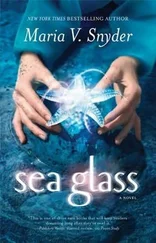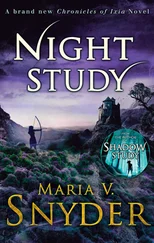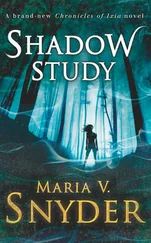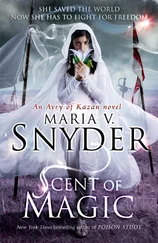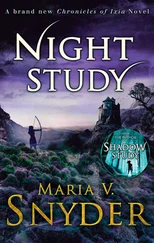Kiki, an American Saddlebred, is 16.1 hands tall. While I can't tell you exactly how high that is, sitting on her for the very first time, I felt I was about ten feet from the hard, hard ground below. I was wearing a helmet, but it seemed inadequate for protection – full body armor would have been more preferable to me. And it didn't help my nerves when Kiki's head went straight up, her left ear cocked back, and she gave me the eye without turning around. With almost 360 degree vision, she only needed to move her head a little to keep me in sight. And I knew she was plotting how to dump this stranger on her back into the nearest mud puddle.
Kiki though was a perfect horse for a terrified beginner. At 22 years of age, she had seen it all, and we spent many hours slowly walking around the training ring. It was July, she was hot and I probably could have gotten off and pushed her faster. The pace was soothing for me and soon I was feeling my.…well…oats, and wanted more excitement than doing figure 8's at 1 mph.
Once I felt comfortable, Susan started teaching me how to guide Kiki into a trot. Although Susan insisted that Kiki is a Cadillac of horses, the bone-jarring gait threatened to dump me onto the ground. Susan has an English saddle—the one without the horn, and, in my mind, the one without anything to hold onto—so posting was required. When it comes to posting letters, I'm a pro, but the equestrian posting—where you raise your body with your legs to the movement of the horse so you're butt's not slammed into the saddle with every step—was beyond my abilities.
Eventually Kiki and I graduated from the training yard to the trail, and I was getting rather cocky. We were having fun without Susan reminding me to keep my heels down and straighten my back. Trotting and walking with trees and wildlife all around. Peaceful, idyllic, singing with the birds until Kiki startled and did a 180 on me. She went right, but I flew left.
Remember how I said there was no horn on the saddle to hold? Well Susan's been telling me for weeks to grab Kiki's mane if I was going to fall (she won't feel pain—I checked) and she did a great job of training me . I automatically grabbed her mane, and Kiki, a very smart horse, stopped dead while I pulled myself back up from the brink. All my cockiness was gone in a flash. Although, I still think Kiki didn't really get spooked, she just wanted to stop my singing ;>
It was a scary, fun and interesting time. I learned about horses and I learned about myself. Mainly, that I like to be in complete control. Even though I held the reins, I knew Kiki was in charge.
Research: The Study of Fire
I thought I would relate a little of my own sizzling adventures in the world of molten glass. In order to write the scenes with Opal, I signed up for a class in glass blowing (gotta love this job).
The first day of glass class, the teacher made it look so easy to gather a slug of glass. But when it was my turn—yikes! It was HOT! The big cistern of molten glass is kept in a rip roaring furnace at a toasty 2100 degrees Fahrenheit. I held a metal rod, and, while squinting through an eye-melting orange light, I dipped the end into the thick goo and spun it, gathering a glob of glass onto the end. The incandescent glob glowed as if alive.
Once acquired, the slug then needed to be quickly shaped. Glass cools at a rapid pace, and, even though heat waves pulsed from the slug, it didn't stay pliable for long. With glass you need to keep re-heating it in the glory hole – which is another furnace that's empty and hot – but it softens the glass so you can try to get the lumps out while making a whole new set of lumps. Did I say you have to keep turning the metal rod? If you don't your lump becomes lopsided and you don't want a lopsided lump.
Eventually we made paperweights—which the insides look great because you want that first gather of glass to be lumpy but not lopsided. You get to pinch the blob with tweezers and twist it—fun stuff. You also dip it into powdered colored glass which colors the glass. Patience is required when working with glass—you get a few seconds to twist and tweeze before having to get up off the bench and reheat everything again.
My first paperweight was a misshapened blob. But after hours of practice, my ability improved, and I created a paperweight worthy to hold down my next novel's manuscript pages. All the time spent in class helped me in writing about Opal.
I learned that working with glass required deft coordination, arm strength, tons of patience, and a good partner—it's a good thing I have a day job!
Research: Naming Characters
I always have fun when naming my characters (and no one else can argue about it—unlike with my children—can you believe my husband wanted a say??). I own 5 baby name books, and am frequently on the Social Security website, checking out popular names. My favorite book is From Aaron to Zoe, 15,000 Great Baby Names, by Daniel Avram Richman. I also use the phone book and take note of everyone's name tags at restaurants, hotels, airports—you see some interesting names (I always try and ask the person what their name means). Even newspapers, magazines, and books can yield a perfect character name.
One of my requirements when choosing a name is to find one that has a special meaning. My main protagonist in Poison Study, Yelena is a Russian name and it means "shining one" which I thought appropriate since she starts out in a dungeon awaiting execution. Her situation is dire, but she still shines. My assassin/chief of security's name is Valek. I always liked Val Kilmer in the movie Top Gun —so Valek is a composite of him.
Some names I do make up:) For Magic Study , I wanted the Sitian people to have earthy names so I chose Fern, Irys, Roze, Leif. I also seem to like jewel names—Perl, Topaz, Garnet. One of the characters is, Cahil which means inexperienced (so that should give you a hint about his personality).
When I'm starting a novel, I'll decide what the theme is or the overall feeling of the novel. Then I'll comb through my baby books and write a list of names both male and female that fit into the theme. For Storm Glass , I wanted powerful names and ones that had meanings about the sun, wind and rain, so my list included Kade (powerful), Raiden (thunder god), Nodin (wind), Aydan (little fire - he's my glass maker), and Ulrick (ruler of all). All these names are listed in the baby book and they were so fun to find!
I know there are writing books available about naming your characters. Also when deciding on names, I try and avoid weird spellings and unpronounceable names, basically because I don't like it when I'm reading a book—it stops me dead as I try and figure out how to pronounce them (guess I shouldn't have daydreamed when my class was learning about phonics in 6th grade!).
And sometimes, my editor makes me change a name. In Magic Study I had Gale (Tula's sister) and Goel (bad dude) and she said I had to change one because they were too close and could confuse the reader. So I changed Gale to Opal and then used the name Gale in Fire Study since Goel didn't.…er.…isn't in that book.
My son also pointed out to me (he's reading Magic Study now) that I prefer short names, which I hadn't realized, but when I thought about it—is very true. Guess I don't like typing long names!
For more information on Maria V. Snyder and her books, visit:
Her website:
http://www.mariavsnyder.com
Her MySpace page:
www.myspace.com/mariavsnyder
Yelena Zaltana’s MySpace page:
www.myspace.com/yelenazaltana
Poison Study book trailer:
http://vids.myspace.com/index.cfm?fuseaction=vids.channel&channelID=217972504
Читать дальше
Конец ознакомительного отрывка
Купить книгу


